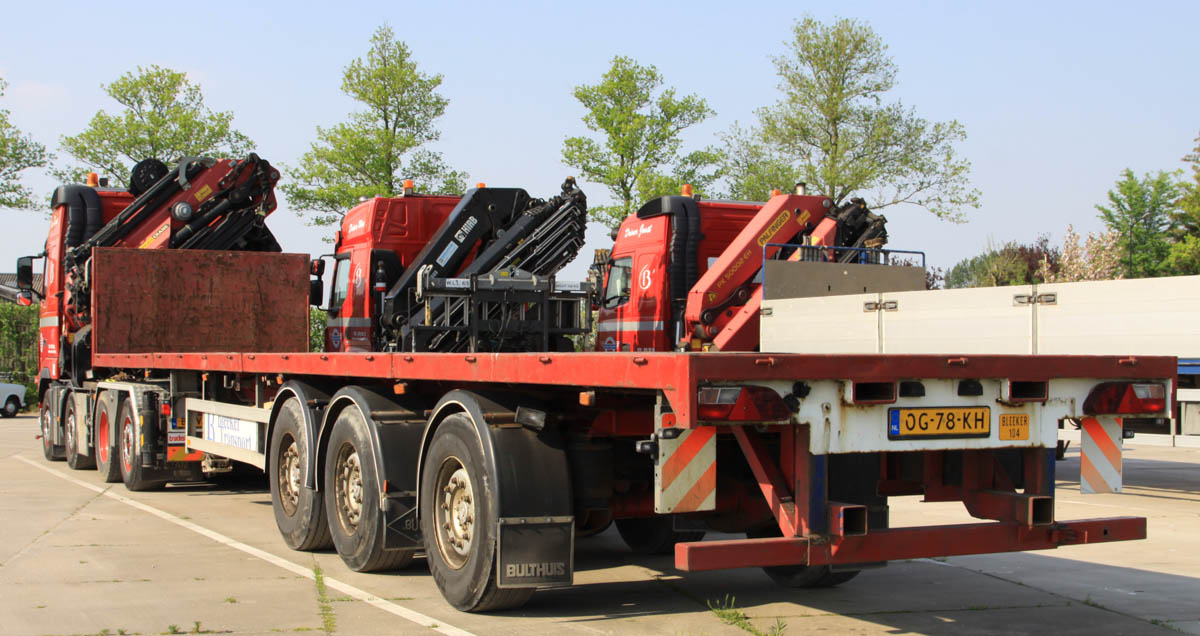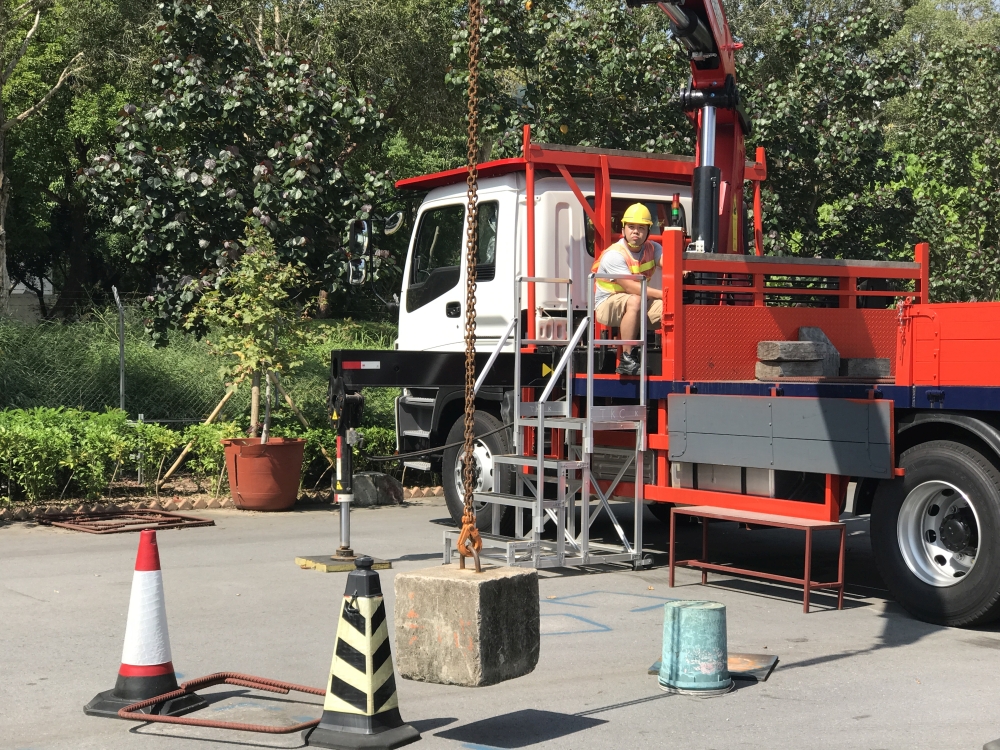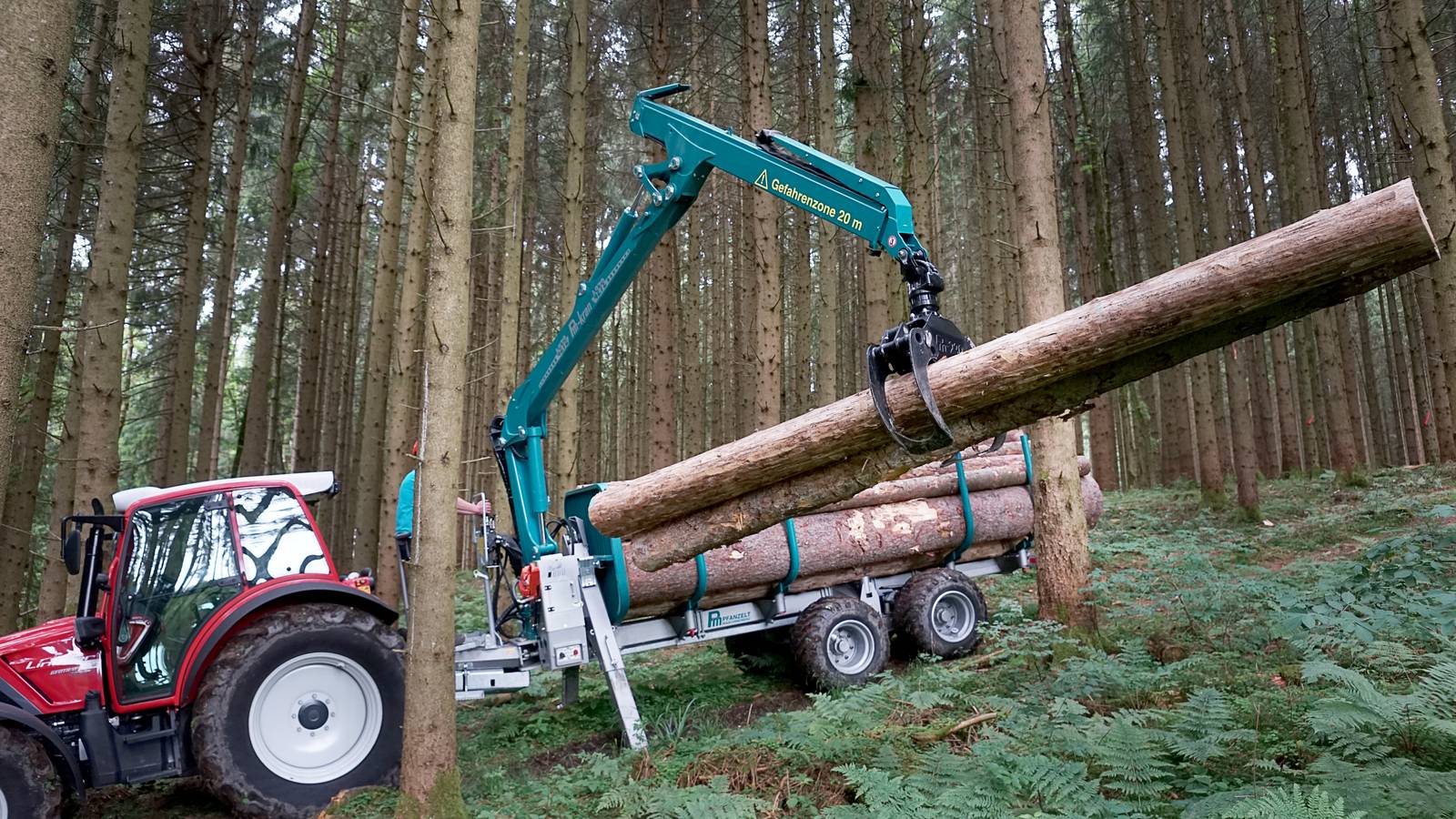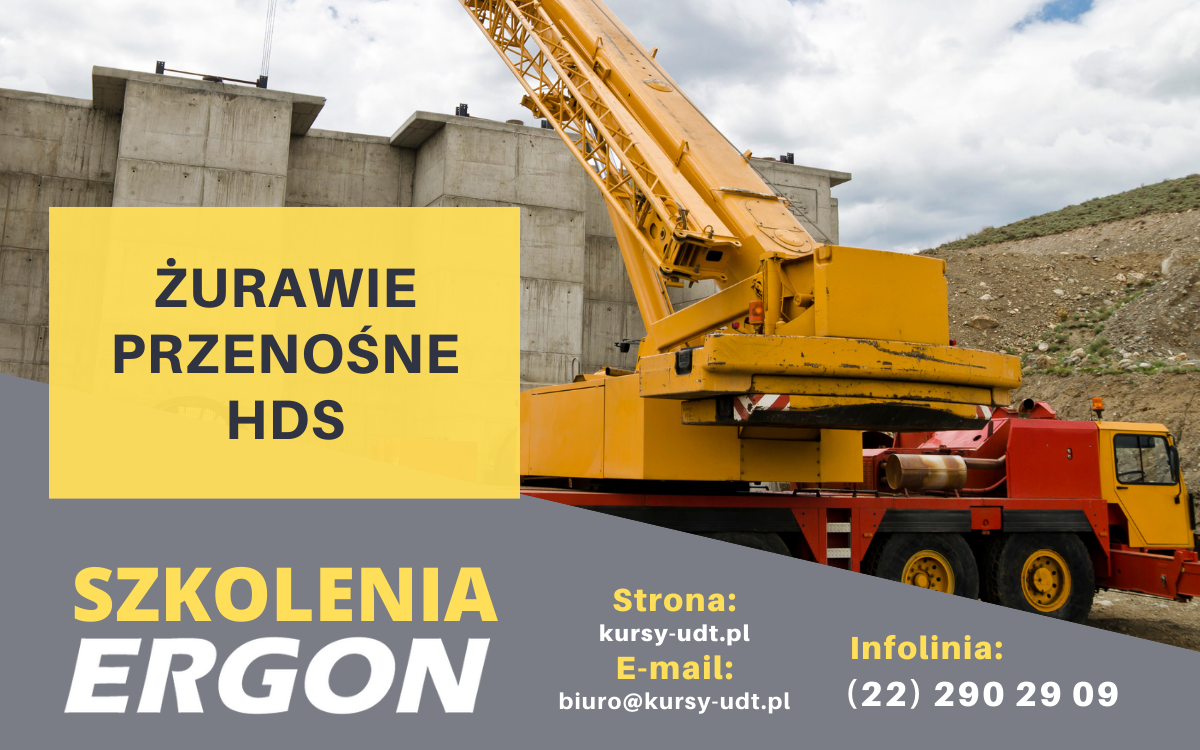HDS cranes - course

Purpose of the training
With a course at our training centre, you will receive your HDS qualification, which entitles you to activities such as operating hydraulic truck cranes. At our company, we provide comprehensive quality training, and by choosing a course with us, you can easily get the knowledge you need to gain the UDT qualifications to work as an operator.

Requirements
To become an HDS operator, you must have at least an elementary school education, be of legal age and have no contraindications, certified by a doctor, to working in the job.
Place of classes
Classes are held at our branches throughout the country, but we also organise training for closed groups with travel to the client. Courses take place according to the current information on our website.
Duties of the HDS crane operator
It is essential for the operator of a loading crane to hold a specialised HDS licence. These are awarded to people who have completed a training course and successfully passed an examination before an UDT commission. The operator must have knowledge of the duties to be carried out before, during and after work, which we also teach in our company's courses.
| Operator responsibilities before starting work | It is essential for the driver to familiarise himself with the crane's technical and operating documents and the crane's certificate of approval. If any of these documents are missing, he must not undertake his work. Also, it must carry out proper maintenance in accordance with the manufacturer's instructions. Namely, check carefully the equipment, the tightness of the components, the operation of the hydraulic locks, the safety and locking devices and the sliding of the supports. If he or she notices any irregularities, it is his or her responsibility to report this to a superior. |
| Responsibilities of the operator during operation | Checking the location of the site and the extent of the crane. Preparation of the crane for loading works. Adequate load hooking and securing. All the while keeping a close eye on the crane in operation and its lifting capacity. Adherence to signs and signals. Responding in the event of an accident or emergency. |
| Operator responsibilities after work | Folding the crane and supports and securing them in the transport position. Careful checking that the load does not pose any danger. Taking the crane to the garage and cleaning the working elements of dirt. Comprehensive protection of the machine against use by inappropriate people. Handing over documents to an authorized person. |
By following the above rules, work usually runs smoothly. The operator is able to work safely and not endanger himself or other workers or the environment. However, in order to be mindful of the fact that accidents do occur when the crane operator is working, he should be aware of the safety requirements and prohibited activities when working with an HDS crane and the regulations of the Health and Safety. By taking the HDS training course, the trainee is always provided with knowledge on the subject, and this is the basis for obtaining certification before the UDT commission in knowledge of hydraulic truck cranes.

Description of the device
HDS are truck-mounted hydraulic cranes, most commonly used in transhipment. Transshipment cranes are characterised by the fact that they have a mechanical drive constructed on the basis of a column that rotates on a base, and another important element of this drive is the boom mechanism.Division of HDS cranes according to their design:
- loading cranes mounted on the centre section of the vehicle,
- reloading cranes mounted at the rear of the vehicle behind the load box on the car,
- reloading cranes mounted behind the driver's cabin on the vehicle,
- HDS cranes for loading timber called forestry cranes, especially as they are equipped with a special gripper instead of hooks to carry and lift boards or timber,
- general-purpose cranes rigidly mounted on a vehicle chassis, the boom works horizontally by rotating as well as vertically by lowering and lifting loads.
Division of HDS cranes in terms of their structural elements:
- the jib - an adjustable element to which the load is attached, is extended manually or hydraulically,
- columns - the vertical element of the crane located on the base, the boom attached to it performs movements in the horizontal range,
- bases - are mounted on the base of the crane,
- Supports - serve to stabilise the unit and prevent it from wobbling,
- accessories - auxiliary equipment.
Auxiliary equipment used when working with the HDS crane
On every HDS crane course, we cover a very important topic, which includes the use of hooks, ropes and slings on which the ballast is attached accordingly. This is essential knowledge, as very often the UDT instructors test your knowledge of them during the exam. They are used in order to handle loads with ease and, thanks to them, we are able to place them anywhere with ease. However, it is important to remember to maintain them frequently. Otherwise, they may become the cause of an accident. What types of auxiliary equipment are there?
- Ropes are used when HDSs are equipped with winches. They must meet specific requirements. Only approved ropes approved for production by the manufacturer are used.
- Slings are the main auxiliary equipment used when securing a load. A distinction is made between closed-circuit slings, single-pull slings, double-pull slings, three-pull slings and four-pull slings.
- The load is assembled according to its weight, position, centre of gravity, as well as its shape and dimensions.
- Hooks, like previous ancillary equipment, must also be checked before use. They are components in the construction of the crane. The operator operates the crane directly using them, or indirectly using the slings, to transport the load with ease.
We would like to invite you to our other training courses for operators and maintainers of UDT equipment, including forklifts, mobile platforms, telehandlers or cranes. We also provide occupational health and safety training (initial and periodic) and fire safety training.
If you have any questions, please feel free to contact us.





























